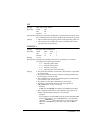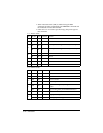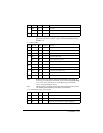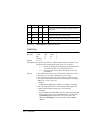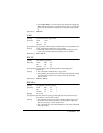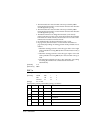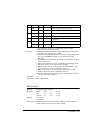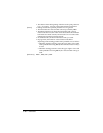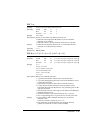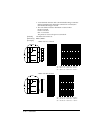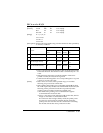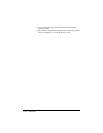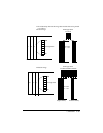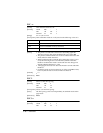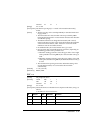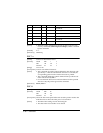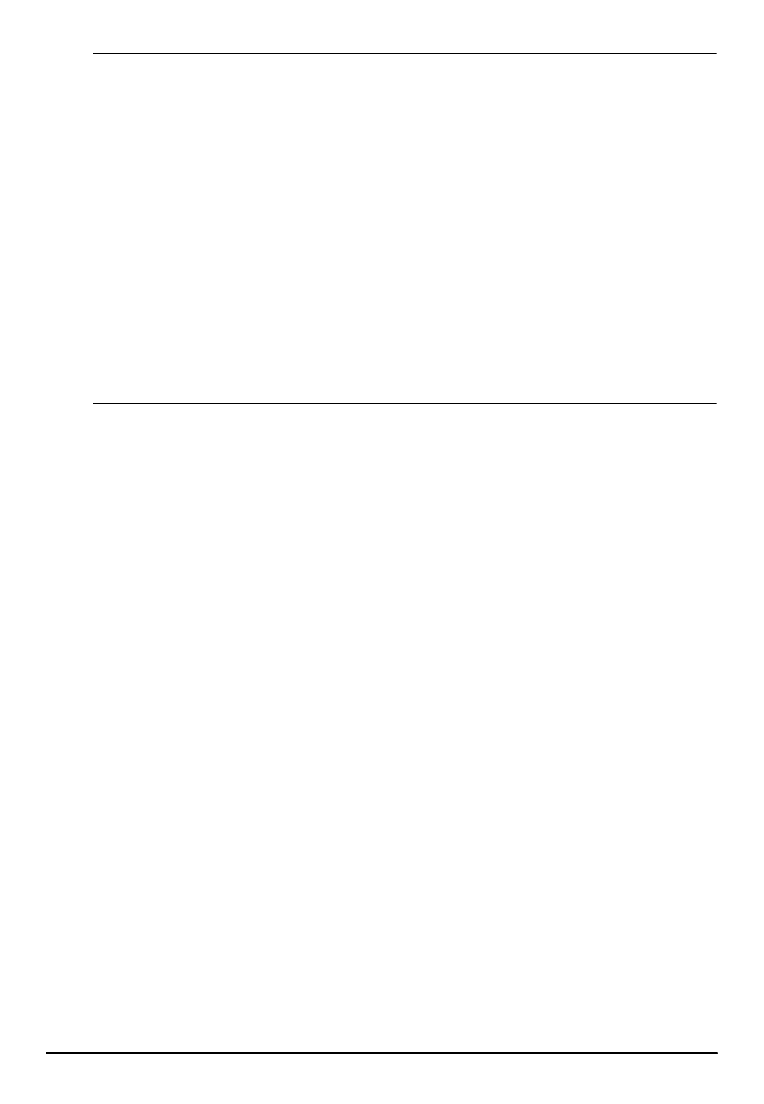
Commands 5-11
ESC %
n
[Name] Select/cancel user-defined character set
[Format] ASCII ESC %
n
Hex 1B 25
n
Decimal 27 37
n
[Range] 0
≤
n
≤
255
[Description] Selects or cancels the user-defined character set.
• When the Least Significant Bit (LSB) is 0, the user-defined
character set is canceled.
• When the LSB is 1, the user-defined character set is selected.
[Notes] • When the user-defined character set is canceled, the internal
character set is automatically selected.
[Default]
n
= 0
[Reference]
ESC &
,
ESC ?
ESC &
y c1 c2
[
x1 d1
...
dy
✕
x1
]...[
xk d1
...
dy
✕
xk
]
[Name] Define user-defined characters
[Format] ASCII ESC &
y c1 c2
[
x1
d1...dy
✕
x1
]...[
xk d1
...
dy
✕
xk
]
Hex 1B 26
y c1 c2
[
x1
d1...dy
✕
x1
]...[
xk d1
...
dy
✕
xk
]
Decimal 27 38
y c1 c2
[
x1
d1...dy
✕
x1
]...[
xk d1
...
dy
✕
xk
]
[Range]
y
= 3
32
≤
c1
≤
c2
≤
126
0
≤
x
≤
12 Font A (12
✕
24)
0
≤
x
≤
9 Font B (9
✕
24 )
0
≤
d1 ... dy
✕
xk
≤
255
k
=
c2
-
c1
+1
[Description] Defines user-defined characters.
•
y
specifies the number of bytes in the vertical direction.
•
c1
specifies the beginning character code for the definition, and
c2
specifies the final code.
•
x
specifies the number of dots in the horizontal direction.
•
d
is the dot data for the characters. The dot pattern is in the
horizontal direction from the left side. Any remaining dots on the
right side are blank.
• The allowable character code range is from ASCII code 20H(32) to
7EH(126) (95 characters).
• The data to define a user-defined character is (y x x) bytes.
• Set a corresponding bit to 1 to print a dot or 0 to not print a dot.
[Notes] • It is possible to define multiple characters for consecutive
character codes.
If only one character is desired, use
c1 = c2
.
• This command can define different user-defined character
patterns by each fonts. To select a font, use
ESC !



